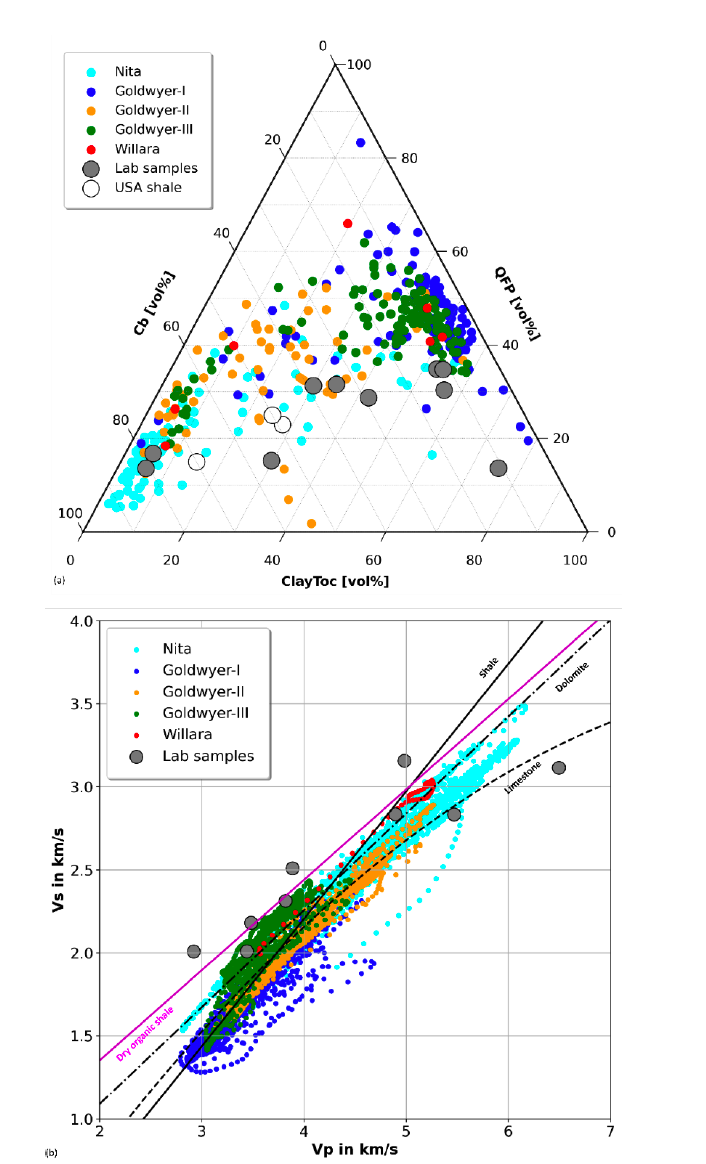Viscoelastic stress relaxation for estimating Shmin magnitude in deep sedimentary formations


Viscoelastic stress relaxation for estimating Shmin magnitude in deep sedimentary formations
Mandal, P. P.1 Sarout, J., Rezaee, R.and Finkbeiner, T.
ARMA 22–0172 - 56th US Rock Mechanics / Geomechanics Symposium, Santa Fe, New Mexico
General adaptability of viscoelastic stress relaxation from laboratory time-dependent deformation (creep) measurement to derive the least principal stress Shmin magnitudes at depths in sedimentary rocks is proposed. It is based upon a simple viscous rheological model and steady-state tectonic strain loading. Creep data reveals different viscoelastic behavior of rocks mostly controlled by the varying mineral composition and the direction of creep measurement (perpendicular/parallel to the bedding plane). First, this approach is applied in a vertical drilled well then verify in another vertical well located in the Canning Basin where the target resources are ultralow permeable unconventional gas shale reservoirs. A continuous Shmin magnitude profile at depth is obtained from wireline logs through the following: (i) combination of laboratory power-law fitting coefficients, (ii) geological horizontal stress accumulation by constant tectonic loading, and (iii) relatively uniform stress variation of principal stress components (∅= S2− S3S1− S3) along with depth. Eaton’s extended model could not capture the stress layering effect precisely and may introduce more uncertainty because of its dependency on several unpredictable parameters while the proposed rheology model relies upon laboratory constituent parameters (B, n) where B is the inverse of static Young’s modulus E and n describes time dependency of rock deformation under a given stress.
For more information on this paper please contact Qeye
